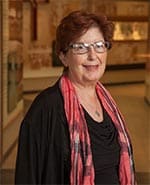The new virus that has upended our way of life these days has also introduced us to a couple of new buzzwords: social distancing.
As social creatures, we survive and thrive on our connection to others, and that makes this new precaution risky, especially for older adults.
When I started my job at Generations, the senior services program at the Methodist Health System, I quickly realized that the No. 1 “illness” that was killing our older adults was isolation.
Any number of factors led them to retreat into their homes, shut the door and shut out the world. That left them vulnerable to isolation and loneliness, and in turn contributed to health problems like cognitive decline, depression, and heart disease.
Hoping to stop the downward spiral, I made it my purpose to find as many activities, as varied as possible, to inspire them to get up, get out, get dressed, and participate.
Now we’re all being told to distance ourselves from others — for our own health and that of our elders.
But there’s a difference between social distancing and social isolation, says Samuel Cullison, MD, vice president for Graduate Medical Education at Methodist Health System.
“Social distancing is preventing catching a viral infection that presents particular risk to all, but especially those over 60,” he says. “Social isolation, on the other hand, will heighten symptoms of depression and anxiety and other pre-existing conditions you may have.
“We need to look to other ways to connect with other people.”
The Rev. Elias Lopez, director of pastoral services at Methodist Health System, says social distancing presents an opportunity to care for others, in addition to ourselves.
“Reach out and connect with one another, check in, touch base, share experiences, and pray for one another,” he says. “Tell someone: ‘I am here for you. I am praying for you.’”
So pick up the phone and call someone. Your voice might be the only one they hear that day.
Share your number with a neighbor, take the chance to reconnect with family, and try a program like Skype or Facetime, so you can see them.
If you’re stuck at home, write a letter. Take an online class. Sit on the porch. Foster a pet.
And if you can, try to turn off the news every once in a while and rein in the binge watching.
“Control your dose of television, unless you use it to watch a show for escapism,” Dr. Cullison says. “It is one thing to find something that makes you laugh as opposed to hearing the news all the time.”
Consider trying meditation, yoga, stretching, or breathing exercises, all of which can help you maintain good health.
One last thing: If you need help, don’t hesitate to ask. People are trying to find ways to connect with others and want to help. When someone asks if you need something from the grocery store, tell them what you need. If you just need to talk, tell them that. This is your opportunity to help improve lives by letting others help you.
If you are a member of Methodist Generations, we are working on making more of our classes available online. If you are at least 55 and not a member, you can join online at www.methodisthealthsystem.org/generations.
Learn other ways to take care of your mental health.
About the author
 Jerri Locke is the director of Healthy Aging for Methodist Health System. She directs a membership program, Methodist Generations for adults who are at least 55 years of age. She is driven to provide quality programs to help the older adults maintain a healthy life. Jerri has a Bachelor’s in Education from Abilene Christian University, as well as a Masters in Rehabilitation Counseling from the University of North Texas and a Masters in Human Relations and Business from Amberton University. She was born and raised in Oak Cliff and values the diversity, history, and the community it provides. She’s a mom of two young adults, a foster mom to a variety of rescue dogs, and a part-time caregiver for her father.
Jerri Locke is the director of Healthy Aging for Methodist Health System. She directs a membership program, Methodist Generations for adults who are at least 55 years of age. She is driven to provide quality programs to help the older adults maintain a healthy life. Jerri has a Bachelor’s in Education from Abilene Christian University, as well as a Masters in Rehabilitation Counseling from the University of North Texas and a Masters in Human Relations and Business from Amberton University. She was born and raised in Oak Cliff and values the diversity, history, and the community it provides. She’s a mom of two young adults, a foster mom to a variety of rescue dogs, and a part-time caregiver for her father.

